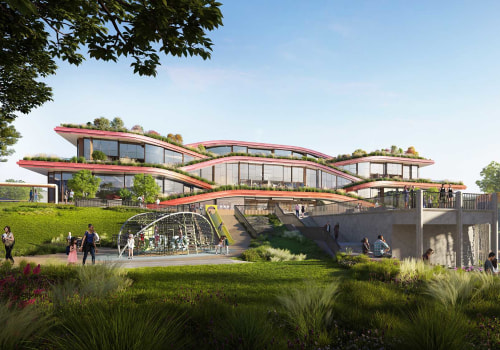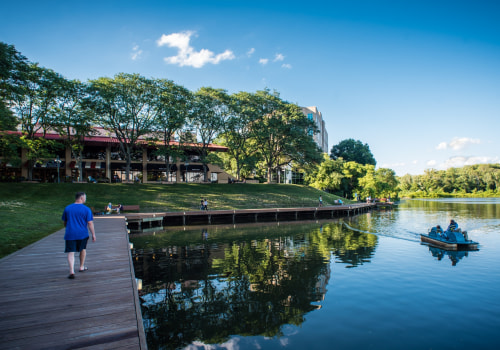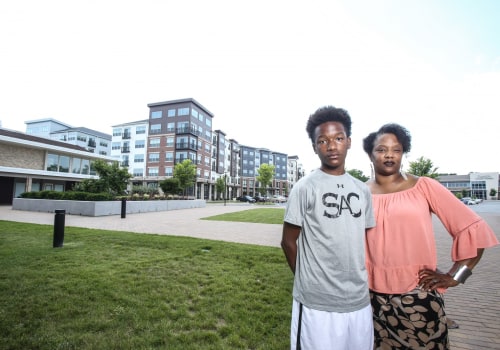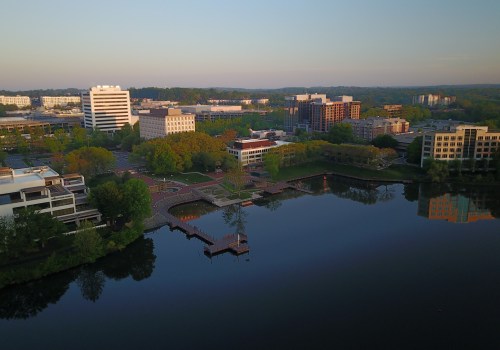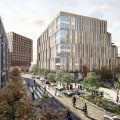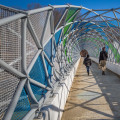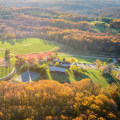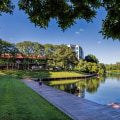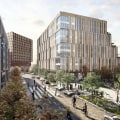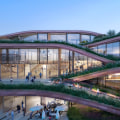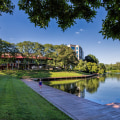Columbia, Maryland is a city located in central Maryland, 20 miles (32 km) southwest of Baltimore and 25 miles (40 km) northeast of Washington, D. C. It is currently undergoing a remarkable transformation to become a vibrant district that meets the changing needs of tenants and their workers. This case study examines how one of the office parks in Columbia, Maryland is implementing this plan. The Howard County Economic Development Authority (HCEDA) has been instrumental in this transformation.
One of their most successful programs is the Maryland Innovation Center (MIC), located at Columbia Gateway. This program has been growing steadily and plans to continue doing so. The development plans for downtown projects in the coming years will include details such as neighborhood design guidelines, environmental restoration, public services and infrastructure. The city also has several major competing shopping centers in Eastern Columbia, such as the Dobbin Center shopping center, which opened in 1983, the Snowden Square Shopping Center, in the rest of GE's industrial plant, Columbia Crossing I and II, which began in 1997, and Gateway Overlook. The Mall in Columbia, located in Town Center, is a large regional mall with three main department stores (Nordstrom, Macy's and JCPenney), a multiplex cinema and more than 200 stores and restaurants. The Maryland Transit Administration (MTA) provides access to and from Washington and Baltimore; the MTA's Monday-Friday commuter bus service connects Columbia to the Washington subway system.
Howard Community College is located close to the city center, while the University of Phoenix, the American Career Institute, Lincoln School of Technology, Loyola University of Maryland, Baltimore County, Maryland University for Integrative Health and Johns Hopkins University have facilities on the east side of the city, in the Columbia Gateway Business Park. According to Shelley Lombardo, chief operating officer of Evergreen Advisors, an investment bank and corporate consulting firm that recently signed a 10-year lease in downtown Columbia, it was important that the company be in the heart of Baltimore and Washington D. Unlike other areas where you can focus on one industry, Howard County has a very diverse base that provides resilience and strength in a changing economy. In addition to its original campus in Columbia, Howard Community College now has satellite campuses in Mount Airy, Laurel and East Columbia, in the Columbia Gateway Business Park. These campuses provide students with access to a variety of educational opportunities that are tailored to their individual needs. The transformation of Columbia is an ongoing process that requires collaboration between local government agencies, businesses and residents. The HCEDA has been instrumental in this process by providing resources for businesses to grow and thrive.
The MIC program has been successful in creating jobs for local residents while also providing access to innovative technologies. The city's shopping centers have also been successful in providing residents with access to goods and services. The transformation of Columbia is an example of how cities can successfully adapt to changing economic conditions. By providing resources for businesses to grow and thrive while also providing access to educational opportunities for residents, cities can create vibrant districts that meet the needs of all stakeholders.
